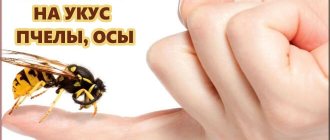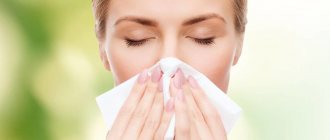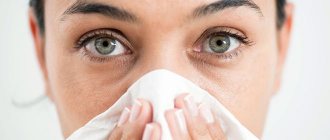Allergies to weeds begin to bother people during the flowering period. Once pollen particles enter the respiratory tract, a specific reaction of the immune system appears, which causes a lot of trouble for patients. To alleviate the condition, they resort to the use of medications and folk remedies, and to following a diet. It is impossible to completely get rid of the disease.
Diagnostic value
It is best to carry out an accurate diagnosis during the period of remission, when there are no allergy symptoms.
Otherwise, the analyzes may be inaccurate. Skin tests are not recommended for preschool children, so they are often prescribed blood tests for antibodies to certain substances. This analysis, unfortunately, will not show the strength of the reaction, only its presence to stimuli. Skin tests are much more accurate: tiny scratches with solutions of up to 20 allergens are applied to the back of the hands in the laboratory, and after a few minutes the presence and strength of the reaction, expressed in redness or swelling at the site of contact, is checked. Tests are done in the presence of allergists, since the immune response to the concentration in the solution can be very strong, and it will be necessary to stop the attack.
If one of the strongest reactions during diagnosis was to timothy grass, doctors can offer specific therapy: doses of the allergen are introduced into the body under the supervision of doctors, gradually increasing them and achieving addiction to it.
This method is good in case of reaction only to 2-3 cereal plants. With year-round rhino-conjunctivitis, allergies to various substances that are not always associated with plants, immunotherapy does not help. Sometimes it becomes life-threatening, significantly worsening the condition.
The patient will have to get used to a new way of life, starting to take medications recommended by experts 10 days before the start of the dangerous season and stopping it only after persistent frosts.
Drops and sprays help relieve a runny nose; catarrhal symptoms are eliminated with the help of corticosteroids and hormonal drugs. If necessary, Salbutamol, Berodual, and other inhalers are prescribed to prevent and relieve bronchospasm.
Treatment
Getting rid of allergy symptoms is not easy. Treatment should be comprehensive and long-term:
- To rid a person of the allergen - limit walks near lawns and fields during the flowering period of grasses.
- Use medications that suppress the body's hypersensitivity.
- Follow a diet so as not to provoke the development of cross-allergy.
Sorbents
Drugs in this group are able to absorb toxins, reducing the amount of allergens in the blood. The most effective of them are:
- Sorbex;
- Polysorb;
- Smecta;
- Lactofiltrum.
The medications are taken in a course, after which they take a break. Be sure to follow the dosage, as exceeding it can lead to the development of constipation.
Antihistamines
This group of drugs suppresses the release of histamine, a substance that is the main trigger for the development of allergy symptoms. Modern antiallergic drugs are able to block histamine, so even in the presence of an allergen, the speed of the immune reaction and symptoms will be an order of magnitude lower.
The most effective of them are:
- Erius;
- Zodak;
- Diazolin;
- Suprastin;
- Loratadine.
All medications have different dosages and are prescribed according to the type of allergen.
Specific immunotherapy
This technique allows you to reduce the sensitivity of the immune system to irritants by exposing it to special substances. The principle of its action is the systematic introduction of protein vaccines, which gradually affect the immune system, which ultimately leads to the absence of the development of an acute reaction.
Allergy vaccines are administered under the supervision of specialists, which makes it possible to provide qualified assistance to a person at any moment. The method is highly effective only if the patient’s blood contains class E immunoglobulins.
Useful tips
Allergies to weeds in adults and children significantly impair the quality of life. To avoid serious exacerbations, patients should follow some recommendations:
- It is advisable to go to areas with different climatic conditions during periods when plants begin to bloom and a large amount of pollen accumulates in the air.
- You cannot stay outside the city during dangerous periods, go out into nature, or take long walks in parks.
- You can open windows in your house for ventilation only after rain. To prevent irritating substances from penetrating, you need to hang gauze soaked in water and folded in several layers on it.
- After visiting the street, you need to take a shower and put your clothes in the wash. Drying items outdoors is prohibited, as pollen may settle on them.
- It is advisable to install air conditioners with filters in the house and use special air purification products.
- After visiting the street, you need to thoroughly rinse your eyes and nose, and gargle. This will cleanse the mucous membranes of allergens.
Cross-allergy to weeds is observed when consuming certain fruits and greens, so diet is an important part of prevention.
Treatment methods for allergies to meadow grass
To this day, allergists do not know of a single treatment method that would once and for all relieve an allergic person from allergies. Of course, with proper treatment and full compliance with the rules of prevention, unpleasant symptoms can be minimized.
Treatment of allergies to meadow grass must be carried out under the supervision of a doctor. The most effective method of treating this allergy is considered to be specific modern immunotherapy with allergens, which has proven itself well. What does this mean? A specialist injects special concentrated solutions of the allergen into the skin of an allergic person for a month or two so that the body gets used to the irritant. As a rule, such immunotherapy is carried out in advance, so that by the time cereal grasses begin to bloom, the body’s sensitivity to their pollen is less.
Drug therapy involves the use of medications that inhibit the development of unpleasant allergic symptoms.
Laboratory allergens.
- local vasoconstrictors;
- various glucocorticoids,
- nedocromil and sodium cromoglycate,
- anticholinergics.
The dosage of medications, of course, is determined solely by the doctor based on the severity of the disease. A patient with minor manifestations of hay fever can manage for two to three weeks with only symptomatic remedies.
Drug treatment
- Avamis.
- Advantan.
- Acrivastine.
- Aleron.
- Gismanal.
- Desloratadine.
- Dexamethasone.
- Diazolin.
- Diphenhydramine.
- Zaditen.
- Zyrtec.
- Zodak.
- Kestin.
- Ketotifen.
- Clarisens.
- Claritin.
- Cromohexal.
- Xizal.
- Letizen.
- Lomilan.
- Loragexal.
- Loratadine.
- Lordestin.
- Mizolastine.
- Parlazin.
- Pipolfen.
- Prednisolone.
- Semprex.
- Setastin.
- Suprastin.
- Tavegil.
- Telfast.
- Trimistin.
- Fexofenadine.
- Fenistil.
- Fenkarol.
- Cetirizine.
- Cetrin.
- Eden.
- Erius.
If nasal or ocular symptoms predominate, antiallergenic drugs such as
- Allergodil.
- Cromons.
- Histimet.
If there is no effect from treatment with the listed drugs, then it is recommended to use local vasoconstrictor drugs:
- Xymelin.
- Afrin.
- Naphthyzin.
- Galazolin.
- Nazivin.
Allergy sufferers should understand that in case of exacerbation of an allergic reaction, they should consult a doctor. The doctor will be able to select stronger medications, taking into account the specific manifestations of your allergic symptoms.
Traditional treatment
If you find an error in the text, be sure to let us know about it. To do this, simply select the text with the error and press Shift + Enter or simply . Thank you very much!
Thank you for notifying us about the error. We will fix everything soon and the site will become even better!
What is hay fever and how does it manifest?
Previously, this disorder was called “hay fever.” It occurs due to an overly active reaction of the body to pollen particles, which settle on the nasal mucosa and cause irritation. Naturally, the immune system reacts to such an “invasion” by mistaking pollen particles for a virus, resulting in irritation, sneezing and itching. Allergy to flowers, the symptoms of which are very similar to those of a cold, creates discomfort and prevents a person from leading an active and healthy lifestyle. Indicators of hay fever are:
– tearing and redness of the eyes;
– nasal congestion and profuse runny nose;
– cough and wheezing in the chest;
- sore throat;
All these signs may indicate that a person has a seasonal allergy to flowering. The symptoms of this disorder are very similar to a cold, but there is one significant difference: with hay fever there is no increase in body temperature, and the symptoms are most pronounced in dry and hot weather.
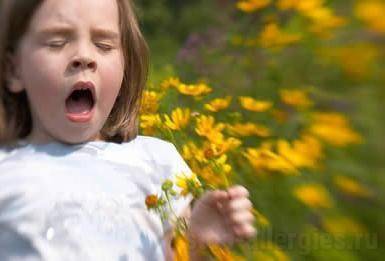
To answer this question, the first thing you need to do is visit a doctor: he will help determine what is causing the flower allergy. Symptoms of hay fever can be eliminated with the help of special medications, as well as using a nasal spray. For inflammation and tearing of the eyes, drops based on a substance such as “Interferon” come to the rescue. To prepare for spring, you can get an allergy vaccination in winter: it involves injecting microscopic doses of the allergen over the course of several months in order to accustom the body to it. Some people are mistaken in believing that if the spring season has passed, then the allergy to flowering has disappeared. Treatment and prevention of hay fever can relieve serious diseases such as bronchial asthma, anaphylactic shock, atopic dermatitis, allergic conjunctivitis and Quincke's edema.
Features of the condition and risk factors
All seasonal allergic reactions caused by the effect of plant pollen on the body are united by the concept of hay fever. Another known name for the condition is hay fever. The disease has a number of characteristic manifestations - rhinitis, dermatitis, conjunctivitis. The development of asthmatic bronchitis of an allergic nature is also possible. Patients complain of severe swelling in the mucous membranes of the nasal cavity and organs of vision and nasal congestion. Frequent manifestations will be sneezing, runny nose, and cough. Along with suffocation or loss of olfactory function, itching and rashes on the skin are likely. If you ignore the symptoms and do not carry out adequate therapy, the disease begins to actively progress with the risk of transition to bronchial-type asthma.
Allergic reactions to meadow and cereal grasses often occur due to genetic predisposition:
- When hay fever is diagnosed in both parents, the probability of the disease manifesting itself in children is 50%.
- If only one parent is diagnosed, then the likelihood of children getting sick is reduced to 25%.
- But if parents do not have allergic reactions, the danger for children is minimal, but still exists - 10%.
The risk will increase significantly due to poor nutrition of children and adolescents, as well as due to weak immunity and a tendency to frequent viral diseases. Environmental pollution with allergens also has an impact. Other factors that provoke a reaction in children include:
- contact of a baby at an early age with substances that have an irritating effect - dust, smoke, chemical fumes,
- premature transfer of children to artificial feeding,
- frequent and long-term use of antibacterial agents (antibiotics),
- poor diet, unbalanced diet, deficiency of vitamins and minerals.
Meadow grasses are the cause of allergies for many people
The appearance of an allergic reaction
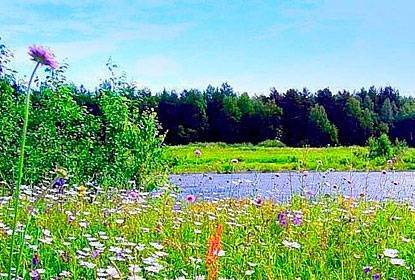
Why? The answer is obvious. Meadow grasses are often called lawn grasses today. Varieties of meadow grass can be found at every step, since in our time meadow grass is planted near many stores. The good thing is that allergies to it are seasonal. As practice shows, the meadow grass allergen most often makes itself felt not immediately, but a couple of hours after contact with the allergen. How does this allergy manifest itself? Quite commonplace, like all other allergies to flowers. As soon as an allergic person approaches a natural lawn or drives a car past a planting or clearing with grass, he immediately begins to have an attack of sneezing, and mucus begins to come out of his nose.
90% of people who suffer from hay fever also have serious food allergies. It is for this reason that experts recommend that patients follow a special hypoallergenic diet, especially during the dusting period of dangerous plants, as mentioned above - June-July.
Clinical picture of the disease
The symptoms of an allergy to meadow grass pollen can be expressed in different ways, but most often it makes itself felt by a runny nose and excessive tearing. Symptoms appear in an allergic person either immediately after contact with these herbs or several hours later.
- hay fever, asthma symptoms;
- redness of the skin, the appearance of urticaria, the development of eczema;
- constant tearing, redness of the eyes;
- severe joint inflammation and pain;
- nasal congestion, swelling of the mucous membranes.
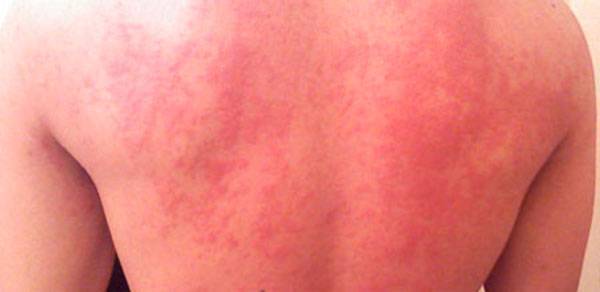
Hives on the body.
Treatment methods for allergies to meadow grass
To this day, allergists do not know of a single treatment method that would once and for all relieve an allergic person from allergies. Of course, with proper treatment and full compliance with the rules of prevention, unpleasant symptoms can be minimized.
Treatment of allergies to meadow grass must be carried out under the supervision of a doctor. The most effective method of treating this allergy is considered to be specific modern immunotherapy with allergens, which has proven itself well. What does this mean? A specialist injects special concentrated solutions of the allergen into the skin of an allergic person for a month or two so that the body gets used to the irritant. As a rule, such immunotherapy is carried out in advance, so that by the time cereal grasses begin to bloom, the body’s sensitivity to their pollen is less.
Drug therapy involves the use of medications that inhibit the development of unpleasant allergic symptoms.
- local vasoconstrictors;
- various glucocorticoids,
- nedocromil and sodium cromoglycate,
- anticholinergics.
The dosage of medications, of course, is determined solely by the doctor based on the severity of the disease. A patient with minor manifestations of hay fever can manage for two to three weeks with only symptomatic remedies.
Drug treatment
If nasal or ocular symptoms predominate, antiallergenic drugs such as
If there is no effect from treatment with the listed drugs, then it is recommended to use local vasoconstrictor drugs:
Allergy sufferers should understand that in case of exacerbation of an allergic reaction, they should consult a doctor. The doctor will be able to select stronger medications, taking into account the specific manifestations of your allergic symptoms.
Traditional treatment
Take two teaspoons (teaspoons) of yarrow per four hundred grams of boiling water. Let the broth brew for ten minutes, take it three times a day, 1/3 of a cup.
If you find an error in the text, be sure to let us know about it. To do this, simply highlight the text with the error and press Shift + Enter or just click here. Thank you very much!
Thank you for notifying us about the error. We will fix everything soon and the site will become even better!
Efficiency of using mixed allergen
A solution for covering the skin using a cutaneous scarification method has gained popularity in diagnostic use. Technologies are used through intradermal and subcutaneous injection. A mixed allergen from meadow grass pollen is a water-salt extract that includes protein-polysaccharide complexes. They are isolated from herbal combined mixtures. Among them, hedgehog grass, meadow foxtail, bluegrass and wheatgrass, timothy, fescue, and straight brome stand out. The extraction method used is a neutral buffer type solution. It is a phosphate salt. It contains per 1 ml the components of sodium chloride and hydrogen phosphate dodecahydrate, potassium dihydrogen phosphate. Additionally, phenol and injection liquid are included.
Features of the drug and purpose
Mixed allergen liquid is transparent. Its color can vary, including a range between yellow and brown. The testing and control liquid and dilution water are colorless and transparent. The protein-polysaccharide type complex is involved in the diagnosis of patient hypersensitivity to a single allergen or a set of allergens through skin tests. It is also used for the purpose of immunotherapy for hay fever, as well as atopic bronchial asthma.
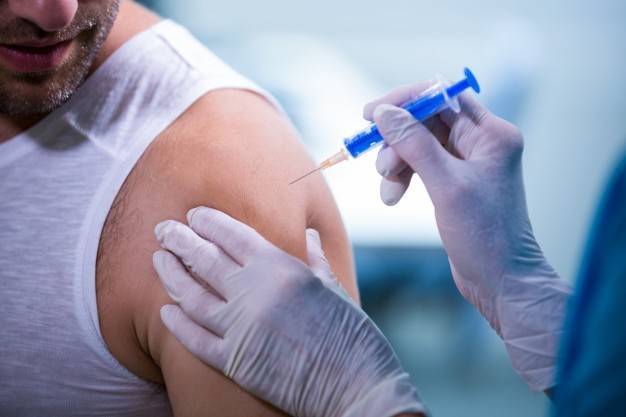
Diagnostics using this drug is prescribed in the presence of clinical manifestations of allergic pathology and information contained in the medical history. Specific immunotherapy (ASIT) is prescribed by allergists taking into account the available medical history, clinical presentation of the disease, and test results obtained.
Existing contraindications are also taken into account
Restrictions on use and side effects
The use of the drug is prohibited when diagnosing:
- exacerbating manifestations of allergic pathology;
- infectious lesions in acute form;
- exacerbation or decompensation of chronic ailments;
- immunodeficiency phenomena;
- autoimmune diseases;
- tuberculosis, asthma during its exacerbation;
- systemic diseases affecting connective tissue;
- diseases of the heart and blood vessels with the possibility of complications from the use of adrenaline.
The product should not be used if:
- Not reaching 5 years of age for immunotherapy and 6 months of age for a diagnostic procedure.
- Pregnancy and breastfeeding.
- Severe atomic eczema.
- Carrying out therapeutic effects using β-blockers.
- Organization of systemic glucocorticosteroid treatment and the use of antihistamines and β-adrenergic agonists.
Methods of application
The drug is used to organize skin test tests using scarification, prick testing or intradermally. Typically, diagnosis of a specific type is carried out in combination with other pollen-type allergens. One procedure should include no more than 15 samples using different allergens, except those included in the mixed allergen. After a few days, antihistamines are discontinued. If the results are doubtful, after 2 days we can repeat the manipulation, but only if the activity of the local reaction decreases. If the answer is positive, the test can also be repeated, but not more than 1 time/month.
Immunotherapy with a specific effect is prescribed if it is impossible to limit and completely eliminate the patient’s contact with the allergen. The effect is applied to patients who are sensitized to the types of pollen included in the medication. The course is started with a dosage that is 10 times less than the dose that causes a positive response at the minimum level when administered intradermally.
Classification
All weed plants are classified according to the following criteria:
- nutrition method;
- characteristics of reproduction;
- life expectancy.
According to the method of feeding, they are divided into non-parasitic (development does not affect the state of garden crops), semi-parasitic (have the ability to photosynthesize, but at the same time partially stick to the ground part or roots of cultivated species), parasitic (do not have a green part, wrap around other crops and feed on them).
Weeds can reproduce by seeds and vegetatively. The first method is characterized as the main one for annual species. The second is for biennials and perennials, growing in one place for at least 2 years. With the onset of autumn, their above-ground part dies off, but the root system continues to develop and produces new shoots in the spring.
Treatment
The first point in treating the disease is changing your lifestyle, at least for the period of exacerbation. Quitting smoking is mandatory, since irritating substances in cigarette smoke create an additional allergic load on the body. If possible, you should avoid stress and change your place of work if your work involves contact with allergenic substances. Another important point is a hypoallergenic diet. Reducing the amount of protein in food significantly reduces the allergic load, since each protein is an antigen that causes an immune reaction, albeit insignificant. If you know exactly the cause of your hay fever, then the best option is to leave or take your child while the allergen plant is blooming to an area where this plant does not grow. If this is not possible, then you should start taking antiallergic drugs before flowering begins - this will significantly increase their effectiveness. In addition to "avoidance", the following methods of treating bloom allergies can be used:
- symptomatic and pathogenetic therapy;
- specific immunotherapy;
- folk remedies.
Symptomatic and pathogenetic therapy
Antihistamines, mast cell membrane stabilizers, and glucocorticoids are used as this type of therapy. They cannot cure allergies, but they successfully eliminate its manifestations. Antihistamines are “classical” antiallergic drugs. They block histamine receptors, thereby eliminating its effect. The most pronounced and unpleasant side effect of antihistamines of the first generations (diphenhydramine, diazolin, claritin, tavegil) was severe drowsiness. In drugs of 3-4 generations (loratadine, desloratadine, levocetirizine), this side effect is completely eliminated. As a rule, tablets are used, but in some cases the drugs can be used in injection form. Mast cell membrane stabilizers (ketotifen) are agents that act directly on basophils and block the release of histamine. As a rule, they are used in combination with antihistamines, or if the latter do not work for some reason. Glucocorticoids are used topically, in the form of nasal sprays, to relieve allergic rhinitis. Despite their extreme effectiveness, they are prescribed last. This is due to the fact that these are hormonal drugs and even when applied topically can have systemic side effects. You can learn how to protect yourself from flower allergies without medications from this video:
Allergen-specific immunotherapy
Specific immunotherapy is the so-called hyposensitization according to Bezredko. Its essence boils down to the fact that the patient is given microdoses of the allergen that are not capable of causing an allergic reaction. Gradually the doses are increased, bringing them to allergenic levels. The purpose of these procedures is to “accustom” the immune system to the allergen so that it stops reacting to it. This is a way to completely get rid of hay fever. Therapy is carried out in the cold season, when contact with the allergen is excluded.
Folk remedies for the treatment of allergies to flowers
Folk remedies are quite diverse. It is impossible to say with certainty which of them are truly effective and which are not. The combination of acupuncture with traditional treatment is quite effective. Also, rinsing the nose with a weak solution of hydrogen peroxide - 1 ml per 100 ml of water - can have a good effect.
Development mechanism
Many plants contain aggressive elements that, when they enter the human body, are considered by the human immune system as foreign substances. This leads to the development of an immune reaction, which results in the destruction of a large number of mast cells.
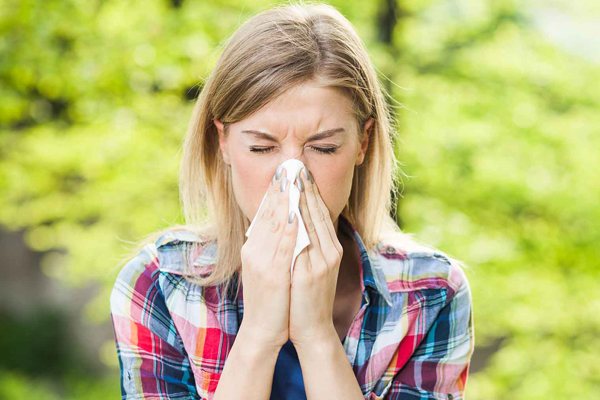
This contributes to the release of excessive amounts of histamine, which is toxic to the cells and tissues of the body. First of all, the cells of the mucous membranes suffer.
Histamine provokes the development of an inflammatory process, accompanied by swelling, dilation of small blood vessels, the release of pathological exudate and other unpleasant manifestations.
Symptoms of the disease are a kind of protective reaction of the body to the action of the allergen. Thus, the secreted liquid (in allergic rhinitis and conjunctivitis) helps to wash away particles of the irritant substance; swelling of the mucous membranes of the respiratory tract prevents the further spread of the allergen.
Dangerous plants
What plants cause allergies? In practice, it has been found that in the world there are more than 11 thousand species of flowering plants and 700 species of flowers that cause allergies. In different climatic zones, the frequency of flowering of the same plant species varies. In Europe and North America, "bloom maps" were compiled for each location. They clarify in what period it blooms and in what areas the specific type of plant that causes allergies grows.
Allergenic plants are divided into 3 groups:
- Trees: coniferous (spruce, pine, fir, etc.), fruit and berry (apple, cherry, black cherry, apricot, peach, etc.), deciduous (ash, poplar, linden, etc.), shrubs (lilac, rosehip, hazel, etc.).
- Cereals (corn, rye, wheat, etc.) and forbs (alfalfa, clover, chicory, chamomile, etc.),
- Weeds (ragweed, wormwood, rush, quinoa, etc.).
The season of hay fever opens with the spring flowering of trees. Pollen from birch, walnut, ash, alder, sycamore, maple, oak, elm, poplar, apricot, apple, pear, cherry, etc. is characterized by increased allergenicity.
The spring flowering of cereals and meadow grasses picks up the baton of pollen distribution. Wild grasses (meadow fescue, wheatgrass, timothy, meadow grass, foxtail, cocksfoot, bromegrass) and field-grown cereals (corn and rye) lead in allergenicity among other plants of this period. After some respite, in the second half of summer, weeds become active - ragweed, wormwood, quinoa and cultivated sunflower.
It is noteworthy that in different countries and climate zones, allergies can be caused by different provoking plants. In the center of Europe, hay fever is most often caused by cereals and trees, in the northern part - by weeds and cereals, and in the south - by shrubs, trees and grasses. In central Russia, sensitization to trees, cereal grasses and weeds has been noted. Residents of the southern regions of the Russian Federation suffer more from allergies to ragweed, wormwood, corn and sunflower. In Siberia, hay fever often causes flowering of trees and cereal plants.
Even indoor plants can provoke allergies in sensitive people. This is especially true for geraniums, cyclamen, orchids, ornamental peppers, hemanthus, etc. By the way, the plant may not have flowers, but it will still release allergens from the leaves and stems.
On a personal plot, health problems do not end when the trees bloom, since people often plant flower beds to decorate the area. Beautiful flowering islands with daisies, crocuses, tulips, Turkish carnations, pansies, snapdragons, lobelias, astilbes and zinnias can also cause an allergic runny nose. They are even advised to plant them with gloves to protect the skin from pollen.
Cross shape
Similar reactions occur when the body is exposed to substances similar in protein composition. Statistics say that with sensitivity to herbs, in 45% of cases, allergy sufferers experience cross-reactions.
| Allergenic products | Pollen | Food | Other |
| Sagebrush | Dahlias, ragweed, daisies, daisies, dandelions, calendula, elecampane, string, birch, olive | Citrus fruits, sunflower seeds, honey, celery, anise, coriander, fennel | |
| Ambrosia | Wormwood and ragweed | Melon, cucumber, sunflower, bananas, celery | Latex |
| Daisies | Wormwood and ragweed | ||
| Sunflower | Dandelions, ragweed, wormwood | Halva, sunflower oil | |
| Quinoa | Beetroot and spinach |
What are the symptoms
Symptoms of the disease can be quite varied; the set of clinical manifestations depends on the amount of allergen, the state of human health, and the degree of sensitization of the body. The main manifestations include:
- nasal congestion, copious discharge from its cavity, sneezing (in the form of attacks);
- swelling of the face and mucous membranes;
- lacrimation, inflammation of the conjunctiva, redness and swelling of the eyelids;
- dry paroxysmal cough, difficulty breathing;
- increase in body temperature to subfebrile levels, weakness, deterioration in general health;
- disruption of the digestive system, manifestations of intoxication of the body;
- skin manifestations, accompanied by rashes, itching, burning in certain areas of the skin;
- inflammation and nagging pain in the joints.
These symptoms can be very dangerous. For example, itching and irritation of the skin and mucous membranes can lead to secondary infection, difficulty breathing can lead to the development of hypoxia, which negatively affects the functioning of all internal organs, and severe suffocation can even lead to the death of the patient.
Signs of a problem
For people who are allergic to grass, symptoms appear in two main stages. At first, clinical reactions are transitory. There is burning and itching in the nasal cavity, as well as in the area of the pharynx, ears, and trachea. Nasal discharge may be clear or mucous. The patient begins to sneeze continuously in fits and starts. His eyelids swell and signs of hyperemia appear. Often the disease is accompanied by conjunctivitis of allergic origin. The patient begins to complain of a fear of light, active lacrimation and discomfort in the eyes, reminiscent of the feeling of the presence of sand.
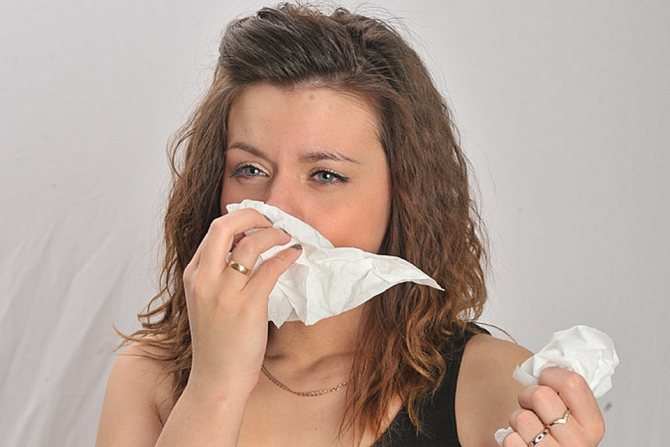
At the second stage, developing after 6-8 hours, an increase in inflammatory changes occurs. Hay fever spreads to the respiratory canals, causing signs of shortness of breath, a feeling of oxygen deficiency, and coughing. Difficulty breathing is often caused by bronchial asthma. Discharge from the organs of vision takes on a purulent form, and hyperthermia is likely to develop. In some cases, dermatological manifestations occur - urticaria, skin rashes. In rare situations, there is a danger of developing Quincke's edema , contact or atopic dermatitis, cystitis, and inflammatory changes on the external genital organs.
Methods of treating the disease
There is no need to be careless about allergies. Many consider it to be a temporary phenomenon, however, allergic rhinitis, which is possible as a complication, requires serious treatment.
It is likely that once the disease will go away without the help of medications, but if you constantly let the allergy take its course, sooner or later it will become chronic and every time it will be provoked by the slightest irritants - cigarette smoke, exhaust gases, and the like.
The best treatment is to stop contact with the allergen. That is why, if you have been diagnosed with hay fever for a certain type of pollen, then it is better to take a vacation and go to other latitudes, and preferably to the sea or to the mountains.
It is extremely important to adhere to special recommendations:
Try to appear on the street rarely. Especially in the morning
It is at this time of day that the highest concentration of pollen in the air is observed. Be sure to ventilate the rooms after it rains outside, then the pollen is nailed to the ground and does not “fly” through the air. It is important to regularly wash the floors in the room where you live and wipe off the dust. Try not to dry washed clothes outside, so as not to wear clothes soaked in the allergen later. After walking outside, it is better to take a shower every time, washing off the pollen.
No matter how much you would like to, you cannot do without drug treatment. To relieve symptoms and reduce the level of histamine in the blood, it is necessary to take drugs such as Alleron, Claritin, Erius. They are effective in combating grass allergies. Of course, before taking medications, you must obtain the approval of your doctor.

Specific desensitization
Science is advancing rapidly, and there is another method that is very effective in the fight against hay fever. This is a specific desensitization. In winter, the patient is injected with the allergen into the blood in small doses. This allows the body to gradually get used to the stimulus. Thus, the immune system no longer reacts to it, but rather blocks its action.
There is a small nuance. Therapy can be carried out using this method, provided that the allergen has been identified and confirmed by laboratory tests.
It is worth noting that treatment during an exacerbation is just as important as prevention during remission. The body’s immune system needs to be supported - harden up, lead a healthy lifestyle, eat a lot of vitamins
Sometimes it is possible to completely get rid of an unpleasant disease, but sometimes a person has to fight it all his life. In this case, you can only alleviate the symptoms. There are a number of medications for this, and with each code new generation drugs appear.
If you are very concerned about itching and rashes caused by an allergen, you can purchase Diphenhydramine. It will reduce intolerable itching, and the rash should go away within a few hours.
Suprastin can have the same effect. There are just a few “buts”:
- It does not fight the allergen, but only reduces the symptoms.
- The drug is contraindicated for drivers and people whose work requires attention.
- The medicine causes severe drowsiness and confusion.
If you have more severe symptoms and an exacerbation begins, then Tavegil and Peritol will help. They can not only prevent severe skin rashes, but also significantly alleviate the patient’s condition.
In the most extreme case, when emergency help is needed for allergic manifestations, corticosteroids are used. Only a doctor can prescribe them, because these are serious medications sold strictly according to a prescription. They instantly relieve all allergy symptoms, but have a number of contraindications.
If allergies bother you with minor manifestations, then you can resort to folk remedies.
Summarizing the information regarding the treatment of grass allergies, three main points can be distinguished:
- firstly, you need to exclude the allergen;
- secondly, regularly carry out wet cleaning in your home and ventilate the room in damp weather;
- thirdly, be sure to strengthen your immune system.



